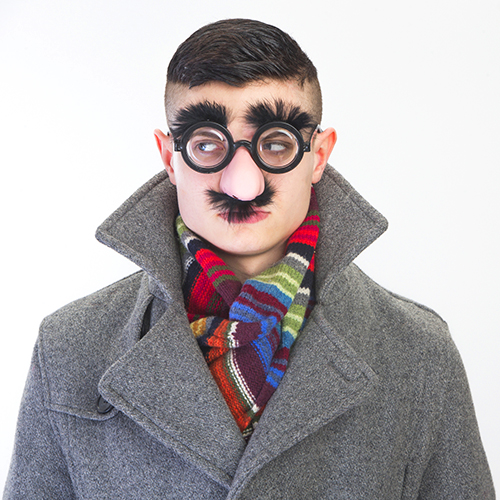So how does Face ID actually work?
December 18, 2017

There’s little doubt that the arrival of iPhone X was the crowning glory of 2017’s already impressive lineup of handset launches.
While eyebrows were most definitely raised at the supercharged A11 Bionic Chip, 5.8″ Super Retina HD display and equally impressive screen-to-body ratio, it was the more dynamic features that really got us gasping.
The addition of Portrait Mode to the front camera answered a longstanding prayer from selfie lovers and the idea of Animoji tickled us enormously. Finally, the unveiling of Face ID blew our goshdarned socks clean off.
All of these innovations were made possible by Apple’s addition of a True Depth camera system to the front of the iPhone X – a combination of sensors, a light projector and a camera that gets to know your face better than your own mother (best keep that nugget to yourself, though).
Bringing with it the lowest existing possibility of someone else being able to operate your phone, Face ID allows you to verify purchases with Apple Pay, and adjust how your phone works to suit your needs.
For example, if your iPhone X senses you’re still looking at it, then it will lower the volume on your alerts. If it senses you’re not looking at it, it will dim its screen (a great battery saver, that).
How does iPhone X map my face?
The front of your X has a ridiculous number of little lenses at the front (they spoil us, they really do). Among these, you’ll find 2 sensors, a light projector and a camera – and it’s these 4 that make up the ‘True Depth’ camera system.
First up, the Ambient Light Sensor and Proximity Sensor work together to check if you’re nearby and gauge what kind of light would be needed to detect your face. So if it’s the middle of the night, or if you’re sitting on a beach at midday, it’ll adjust itself accordingly.
Next, a Dot Projector shoots out over 30,000 dots of infrared light onto your face. Each one will have to travel a different distance to hit the contours of your face.
These dots are there to be captured by the fourth lens – the Infrared Camera. It measures the gaps between those dots and it’s this information that the A11 Bionic Chip uses to map the contours of your face. The odds of someone else having these exact same measurements is a staggering 1,000,000 to 1.
What if my face changes?
If you were to shave off your great big bushy beard, get a mad nose piercing or simply fall prey to the age-old grandparental scam of ‘Got Your Nose’, the system may decide your face is too different to the one it has in its records. If it’s not happy with what it’s seeing it will lock after 5 attempts.
You can simply unlock the phone using your passcode – and if your phone decides there’s enough of a similarity in your ‘before’ and ‘after’ info it will then revise its existing records with your new facial details.
Can it be tricked?
Say someone were to hover your iPhone X over your face as you slept – the system would detect that your eyes weren’t open and would keep itself locked (this feature can be switched off for users who are blind or have low vision).
If someone showed the iPhone X a picture of your face, they’d get kicked out faster than a costumed stag party trying to enter a high-end cocktail bar. Why? Well, those clever infrared dots would only show a flat surface.
If someone made a mask of your face, the infrared camera on your phone can detect the difference between skin and… not skin.
Ultimately, the only hurdle you might have with Face ID would be if you have a really nosy identical twin. If this is the case, or if there’s any other reason you don’t want to use your face to unlock your phone, you can turn it off and stick to using the passcode – no biggie.
Can it be hacked?
When your face is scanned, that unique information doesn’t even go to Apple – it stays on a mega-secure separate chip on your iPhone. The only way someone could hack this information is if they access your phone. That’s got to be quite the Catch-22 for a hacker.